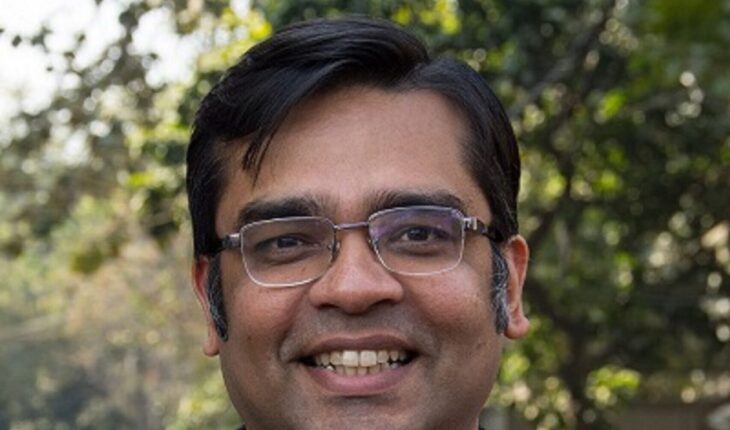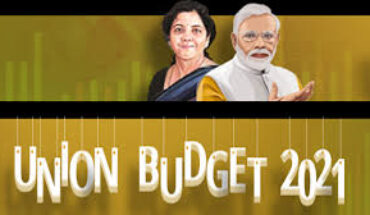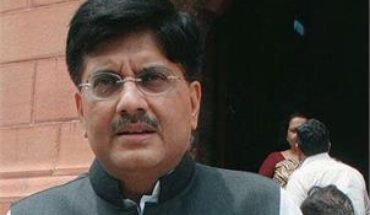By Dominick Rodrigues
Mumbai: India’s 100 billionaires have seen their fortunes increase by Rs 12,97,822 crores since March 2020 — enough to give every one of the 138 million, poorest Indians a cheque for Rs 94,045 each – and it would take an unskilled worker 10,000 years to make ‘what Mukesh Ambani made in an hour during the pandemic’ and ‘3 years to make what he made in a second’, according to latest India supplement of the latest Oxfam report “The Inequality Virus,” that was released on the opening day of the World Economic Forum’s ‘Davos Dialogues’.
The new global survey of 295 economists from 79 countries, commissioned by Oxfam, highlighted 87 percent of respondents, including Jeffrey Sachs, Jayati Ghosh and Gabriel Zucman, expecting an ‘increase’ or a ‘major increase’ in income inequality in their country as a result of the Coronavirus pandemic — the world’s worst public health crisis in a hundred years that triggered an economic crisis comparable in scale only with the Great Depression of the 1930s.
“The report shows how the rigged economic system is enabling a super-rich elite to amass wealth in the middle of the worst recession and the biggest economic crisis in the history of independent India, while billions of people are struggling to make ends meet. It reveals how the pandemic is deepening long-standing economic, caste, ethnic, and gender divides,” Oxfam India CEO Amitabh Behar said, adding “While the Coronavirus was being touted as a great equaliser in the beginning, it laid bare the stark inequalities inherent in the society soon after the lockdown was imposed.”
“India introduced one of the earliest and most stringent lockdowns in the face of the pandemic; the enforcement of the lockdown brought the economy to a standstill triggering unemployment, hunger, distress migration and untold hardship in its wake. The rich were able to escape the pandemic’s worst impact; and while the white-collar workers isolated themselves and worked from home, a majority of the not-so-fortunate Indians lost their livelihood.”
The report notes that billionaires such as Gautam Adani, Shiv Nadar, Cyrus Poonawalla, Uday Kotak, Azim Premji, Sunil Mittal, Radhakrishan Damani, Kumar Manglam Birla and Laxmi Mittal — working in sectors like coal, oil, telecom, medicines, pharmaceuticals, education, and retails — increased their wealth exponentially since March 2020 when India announced the world’s biggest COVID-19 lockdown and the economy came to standstill. On the other hand, data has shown that 170,000 people lost their jobs every hour in the month of April 2021.
The report’s India Supplement highlighted that:
Rich got richer: Data shows what Ambani earned during the pandemic would keep the 40 crore informal workers — that are at risk of falling into poverty due to COVID-19 — above the poverty line for at least 5 months. The wealth of Indian billionaires increased by 35 percent during the lockdown and by 90 percent since 2009 to USD 422.9 billion ranking India, sixth in the world after US, China, Germany, Russia and France. In fact, the increase in wealth of the top 11 billionaires of India during the pandemic could sustain the NREGS scheme for 10 years or the health ministry for 10 years.
Informal workers worst hit: Out of a total 122 million who lost their jobs 75 percent, which accounts for 92 million jobs, were lost in the informal sector.The mass exodus on foot triggered by the sudden lockdown & the inhuman beating, disinfection and quarantine conditions the informal workers were subjected to turned a health emergency into a humanitarian crisis. Over 300 informal workers died due to the lockdown, with reasons ranging from starvation, suicides, exhaustion, road and rail accidents to police brutality and denial of timely medical care. The National Human Rights Commission recorded over 2582 cases of human rights violation as early as in the month of April 2020.
Education on hold: The long disruption of schooling risked doubling the rate of out of school, especially among the poor. Only 4 percent of rural households had a computer and less than 15 percent rural households had an internet connection.The digital mode of delivering education has proven exclusionary. Out of the poorest 20 percent households in India, only 2.7 percent have access to a computer and 8.9 percent to internet facilities. Girls are most likely to bear the brunt as only 15.5% rural females could either use a computer or the internet. While the burden of ensuring children continuing their education fell on individual households with those financially better off and educated benefitting, this period saw an exponential growth of private providers such as BYJU’s (currently valued at USD 10.8 billion) and Unacademy (valued at USD 1.45 billion).
Health Inequalities: Only 6 percent of the poorest 20 percent has access to non-shared sources of improved sanitation, compared to 93.4 percent of the top 20 percent. 59.6 percent of India’s population lives in a room or less. This meant that facilities to wash hands and maintaining distance, essential to prevent the spread of Coronavirus, was impossible for a majority of the population. Pregnant women belonging to poor families were often left unassisted as most public health care institutions were turned into COVID-19 testing facilities and hospitals. The urgent need for healthcare resulted in massive profiteering from many private health establishments and while the government did take steps to make COVID-19 services affordable by including them under Ayushman Bharat-PMJAY, the scheme only covered BPL population leaving out the uninsured poor and the Middle Class.
Women bear the burden: 17 million women lost their job in April 2020, while unemployment for women rose by 15 percent from a pre-lockdown level of 18 percent.This increase in unemployment of women can result in a loss to India’s GDP of about 8% or USD 218 billion. In addition, the total time spent in both paid and unpaid activities by women has risen with the increase in the workload as a result of being stuck at homes. Women have been working longer hours and simultaneously managing the daily chores of the household, the educational needs of the children and care for all members of the family. The work-from-home culture has also blurred the lines between working hours and personal downtime.
Rise in Violence Against Women during Lockdown: The National Commission for Women (NCW) received 1477 complaints of domestic violence from women between March 25 and May 31, 2020 alone. Economic hardships and growing anxiety during emergencies often fuel violent and abusive relationships directed towards women and the pandemic has been no exception. This has unfortunately led to an increase in cases of domestic violence. Locked in their homes with their abuser, the numbers saw a spike in cases. As of November 30, 2020, cases of domestic violence stand at 4687 in 2020 compared to 2960 in 2019—a 58% rise. The highest number of cases were from Uttar Pradesh (1576), followed by Delhi (906) and Bihar (265).
“The pandemic has shaken the world to its very core. It has exposed the fault lines in our societies and economies but has also paved a way for transformative policies for a just and equal world. Newer and creative ways of catering to the needs of the masses is possible if governments are committed to the needs of its people. It is time for Government of India to take specific and concrete actions that will build a better future. We can build a future that is led by citizens’ voices who seek a more equal and just future,” Behar said.
“The COVID-19 crisis must be a turning point in the taxation of the richest individuals and big corporations. Progressive taxation of the richest members of the society must be the cornerstone of any equitable recovery from the crisis,” Behar said, adding “There is an urgent need to enhance Health’s budgetary allocation to the tune of 2.5 percent of GDP to reinvigorate the public health system, reduce out-of-pocket expenditure and strengthen health prevention and promotion.”
“India has the world’s fourth-lowest health budget in terms of its share of government expenditure. If India’s top 11 billionaires are taxed at just 1% on the increase in their wealth during the pandemic, it will be enough to increase the allocation of ‘Jan Aushadi Scheme’ by 140 times to provide affordable medicines to the poor and marginalized.”
“The COVID-19 pandemic-induced crisis has put the future of young people at risk, as too many are foregoing or losing access to education, especially girls and other economically and socially excluded groups. There is an urgent need to increase–or at least maintain–public education expenditure, in line with its commitments made as part of the 2020 Global Education Meeting declaration.”






